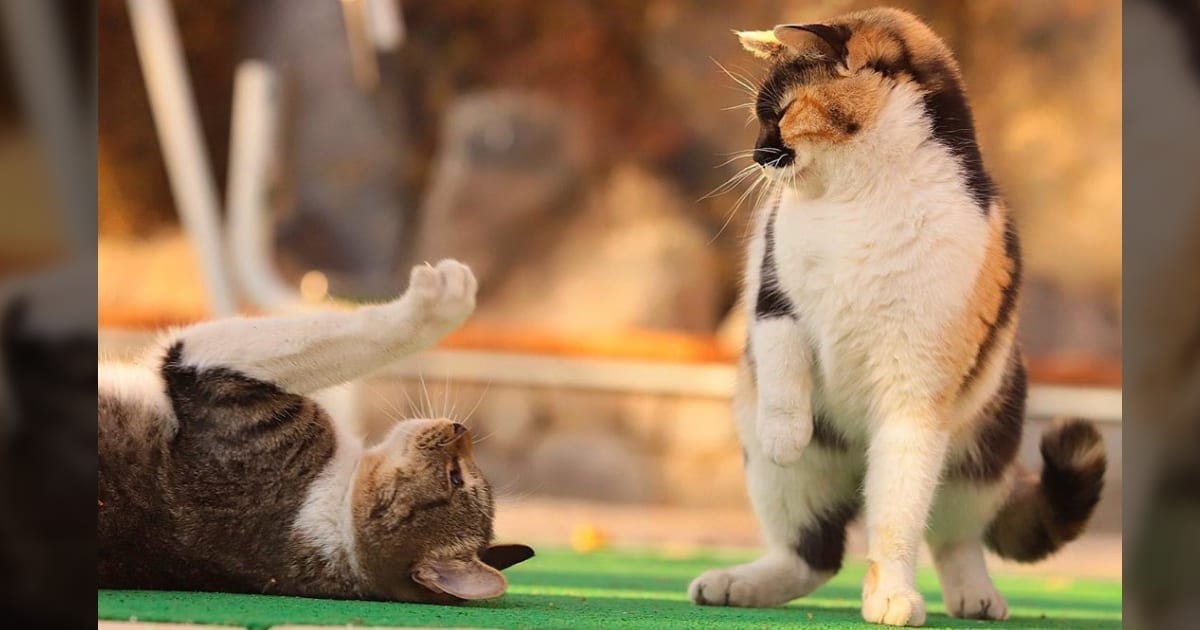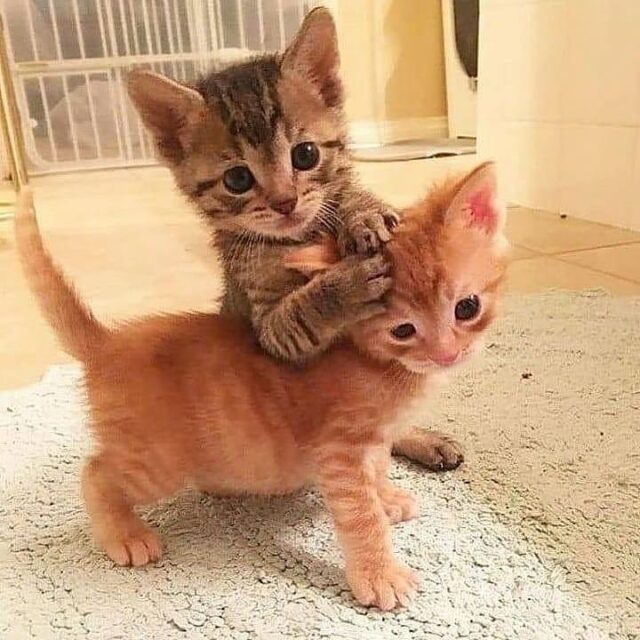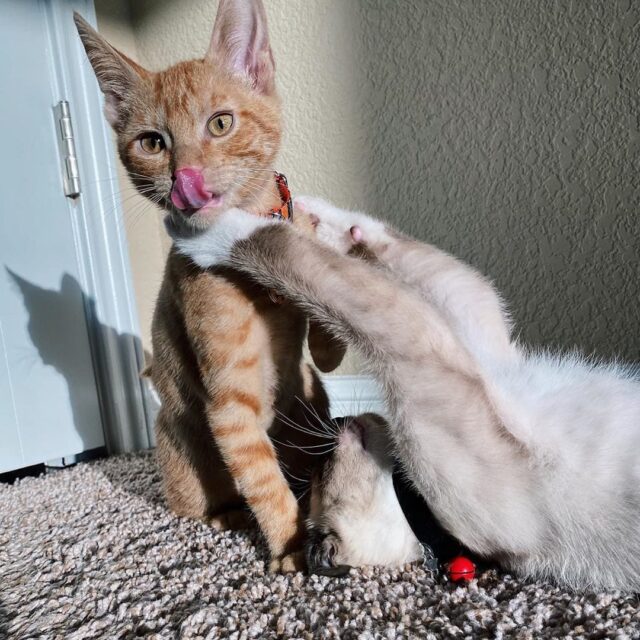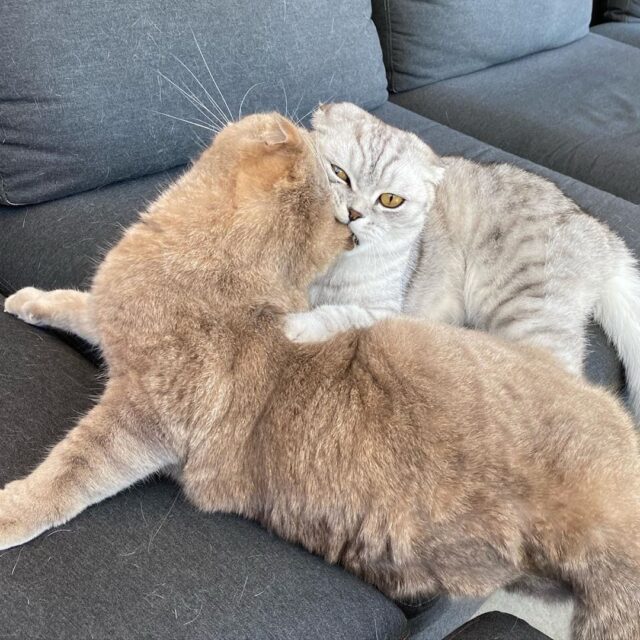Cats at play can get pretty rough and tumble, sometimes alarming their parents with all that flipping, rolling, and swatting.
Most of the time, it’s just their little darlings tussling for a good time. Every once and a while though, cats get into a pretty good dust-up full of flying fur and angry yowling.
But it can be hard to tell the difference sometimes. Especially when the fight starts off as a round of tough play. One minute it’s rough-and-tumble fun and the next everybody’s gotten growly and mean.
How can we as cat parents tell the difference? And is there a way to know when play fighting is turning to true fighting?
As the practice manager of Red Barn Animal Hospital, Diana Stoll has plenty of experience with cats and their various behaviors. She offers an explanation on determining whether a cat fight is just play or the real deal.
Play Fights are Part of Healthy Cat Interaction
As kittens, cats learn from interactions with their littermates. With mom watching over kitten play, Diane explains, “They learn how to communicate with other cats and that claws and teeth can cause pain.”
Kittens began to tussle with their litter maters pretty quickly, learning the subtle nuances of what a feline body can do. As kittens age to cats, “play fighting continues to be part of an adult cat’s daily activities in multiple feline households as an outlet for exercise and socialization.”
But how can we tell when play turns to real fighting?
Check out these signs of playing versus fighting:
Body Positioning
When playing, cats will lean their bodies toward each other in order to deliver a good thwap of the paw. But Diane reveals, “Felines with arched backs and puffed out fur in a leaned-back position are ready for a fight.”
Ear positioning can also signal intentions. “The ears of kitties ready for a fight are turned back, sometimes pinned back against their heads.” Playful cat ears generally remain in their usual upright position.
The way cats look at each other during a rumble can tell you if it’s a fight or just play. When cats are angry with each other, they stare at each intently with that laser focus that can sometimes alarm us.
The Aggressor
As cats play, they take turns being the ‘bully’. You can see the role change between the cats as they tussle. In a real fight, one cat will remain the aggressive dominant.
Biting
Biting is part of play, but there is a difference in the mouthing actions of play versus those meant to do harm. Listen for shouts of pain when cats are using teeth during play. Painful bites mean the situation has changed from play to aggression.
Vocals
Playtime is generally quiet when it comes to vocals. Cats will sometimes meow and make noise during fun fights, but cats who are truly engaged in a battle of aggression will vocalize with yowls, growls, and hissing.
What to Do if Cats are Really Fighting
If you determine your cats are engaged in a real fight, break them up by clapping, stomping feet, or making some form of noise. But, be careful! “Never put your hands into the middle of a fight — your hands will most likely end up bleeding.”
Separate the cats once they’ve untangled by herding each of them into separate spaces or rooms. Diane also recommends, “Throw a towel over one of them to pick him up to move to a separate space.”
Don’t yell or punish the cats for fighting as “punishment may serve to increase their animosity toward each other.”
Playfighting can look menacing, but once you determine its just the cats having fun, let them continue. These good-time tussles are an important part of being a cat!
Please SHARE to pass on this story to a friend or family member.
H/T: www.dailyherald.com
Feature Image: @cat_by_snap/Instagram






